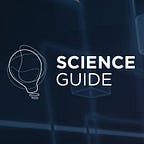AI finds the best selling style
The fashion industry is maybe not the first thing that comes to your mind while speaking on artificial intelligence. Still, a movement towards using AI-technologies in all parts of the fashion value chain can be seen, exploring new ways to create value.
Digital technologies, such as AI, have the potential to transform every single production activity in the fashion value chain. For example, chatbots for customer service, smart data collection for inbound logistics or digital boardrooms offering sales forecasts and share valuation in real time.
McKinsey predicts in their publication The State of Fashion 2018 that AI enhancements will go beyond machine tasks into customer-interaction and other processes, blurring the line between technology and creativity. Fashion companies will use it to enhance the creative process, design and product development; they will, for example, use algorithms to sift vast amounts of data to predict which product features customers are most likely to prefer.
Meanwhile, most of the early adapters of AI technologies in the fashion industry focus on several elements in the value chain, the most significant are:
• automation of operations (planning, scheduling, optimization)
• demand forecasting (predictive analytics)
• personalization with customers (deep learning)
10 percent increase in revenue with predictive analytics
One of the main uncertainties of a retailer is pricing and demand forecasting for products not previously sold, and which accounts for the major part of the revenue. To solve this problem, machine learning methods can be used to estimate historical lost sales and forecast future demand for new products.
The American retail store Rue La La and the Massachusetts Institute of Technology (MIT) used machine learning methods to forecast demand during flash sales. One of the main methodologies used was the Decision Tree, which is an effective predictor of demand.
A price optimization model was also created that used the predictors of the regression model as input. It also included a hypothesis that there are certain attributes of certain styles that can be used to find out which ones will be more sold than others. During the process, the team investigated the existing data on sales of this certain styles.
Rue La La and MIT developed a classification system that helped the store forecast demand on products during sales. The classification system includes brand information, product type, colour, price and a number of other factors.
Also, a metric was used, in order to understand the effectiveness of sales of individual products. This is defined as sales units, separated by units of supply. For example, for a particular sweater there were 100 units that they purchased from the brand, 60 units were actually sold out. Thus, the sale in this case is 60 percent.
So, they created a histogram of what percentage of styles fall under various sales with ranges of 0–25, 25–50, 50–75, 75–100 and completely sold out.
The chart showed that 50 percent of styles are sold immediately when they are exhibited. It also showed that there is a value in that you can predict what these styles are and make it possible to raise prices for these styles.
The MIT team created a regression model based on observable attributes that helped the Rue La La store build a demand forecast model on the style level. It was a fundamental part of the price optimization tool.
This allowed the store to optimize prices and get a 10 percent increase in revenue.
Integration with business process
The model of demand forecasting and price optimization was then integrated with the business processes of Rue La La.
Every day, the price optimizer offers recommended valuables that run the next day. The price optimizer evaluates all styles, it takes about an hour, then it sends to all merchants recommendations on style prices for the next day. The model does not use competitive prices and therefore needs someone to make sure that prices are not outside the normal ranges.
Reduction in conversion rates thanks to machine learning
BrandAlley, an online clothing store based in the UK, in a collaboration with AI-company Emarsys, worked with marketing automation using machine learning methods.
First, BrandAlley began using Emarsys platform to send more targeted and personalized messages to the clients. Through the Emarsys platform BrandAlley identified the frequent buyers. Then, they segmented them by the brands they bought or frequently viewed and gave them discounts on these brands before they were available to the rest of BrandAlley’s customer base.
BrandAlley started then to track visitor interactions on the site and processes it, which lead to automated, personalized recommendations to customers via email, mobile phone or network. The more targeted and automated marketing had become the less time was spent on sales, helping reducing costs of the sales processes.
BrandAlley uses also the Emarsys platform to personalize omnidirectional campaigns by making more efficient use of existing data from its CRM systems, at the same time changing its entire strategy for acquiring and storing social media advertisements.
Machine learning on the Emarsys’ platform provide BrandAlley with recommended formats and campaigning activities based on specific customer segments.
Other significant results and benefits include a 50 percent reduction in conversion rates for abandoned baskets and acquisition costs (CPA), and an eightfold increase in the proportion of customers.
For more insights please watch the video in the link below on how Rue La La & MIT worked on demand forecasting and price optimization.
https://www.youtube.com/watch?time_continue=15&v=F6Sv3hLa62g
